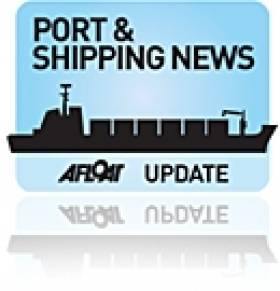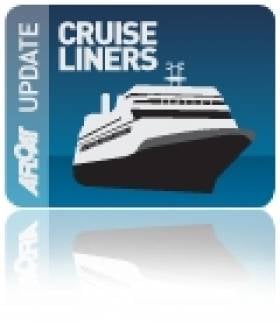Displaying items by tag: Shannon Foynes Port Company
Shannon Port Facility Expected to Fetch €700,000
The Irish Times reports that Shannon Foynes Port Company is set to sell off extensive warehousing along with a development site facing the port.
Five separate warehouses extending to 5,297sqm are included in the sale, along with almost 1 hectare (2.44 acres) of development land.
DTZ Sherry FitzGerald is handling the sale by public tender on 28 September. The warehousing and site are likely to make more than €700,000 for the port company.
Record Profits for Foynes Port as Tonnage Increases
The boost is revealed in the state-owned company's annual report which shows the facility made a bottom-line profit for the year of €1.1 million – a five-fold increase on 2009. Operating cash flows rose to €3 million, up from €2.7 million a year earlier. To read more click HERE.
Late last month the Co. Limerick port was busy particularly with the seasonal arrival of three cruise ships and all made within one week, for more click HERE. This Friday sees the return of one of those cruise-callers, the French-flagged Le Diamant which is on charter to operator Inter Cruises.
Loop Head: A Guiding Light for Foynes-Bound Cruise Calls
Her arrival will be followed by P&O Cruises latest addition Adonia on Saturday. With 710 berths the 30,000 tonnes vessel is the smallest of the seven-strong fleet which can accommodate between 1,800 and up to 3,100 passengers as in the case of the Azura. The 115,000 tonnes vessel departed Dublin Port this evening. Her first call to the port was last year (click HERE) and she is the largest cruise ship to call to the capital.
On Tuesday of next week the 9,000 tonnes Spirit of Adventure (cruises) marks the third cruise caller to Foynes. The port is along with five other terminals located throughout the country's largest estuary are operated by the Shannon Foynes Port Company (SFPC).
Incidentally Spirit of Adventure and Azura where two of another trio of cruise ships that visited the Port of Cork on Monday, with Holland America Line's 59,000 tonnes Rotterdam forming the third vessel. This was the first occasion that Cork has handled this number of cruise ships on a single day, bringing 7,000 passengers which set a new record for the port.
- Shannon Estuary
- Shannon Foynes Port Company
- P&O Cruises
- Loop Head
- Cruiseships
- lighthouses
- Dublin Port news
- Holland America Line
- Port of Cork News
- Le Diamant
- Cruiseliners
- Spirit of Adventure
- Shannon Estuary news
- Loop Head Lighthouse visitor centre
- Azura cruise ship
- Spirit of Adventure cruiseship
- Adonia cruiseship
- Rotterdam cruiseship
- Loop Head Lighthouse
- Shannon Estuary and River
- Shannon Estuary and River news
- Lighthouse news
- Irish cruise calls
- Irish ports of call
- Foynes Port
Bulker Becomes Largest Vessel to dock at Foynes
The 61,000 dwt bulker Sibulk Prosperity became the largest ship to date to dock at Shannon Foynes recently according to The Limerick Leader.
The Panamanian registered vessel carrying a cargo from Santo in Brazil. At 200 meters long and a draft of 10.5 meters, the vessel delivered a cargo of 22,000 tonnes and took 3 days to discharge its cargo of animal feed. The discharge rate was 1,100 per hour for her time in port. Limerick based ship agents Mullock & Sons provided stevedoring services.
Tim Egan, manager of Mullocks & Sons Shipbroking in Foynes said 'Ships that usually come into Foynes would be about 35,000 dwt. This is almost double that but the challenge isn't her size but her length. The way they are building ships these days, it nearly double the dead weight but is the same depth in the water. She will have to turn around in the Estuary to get out when she leave the port'.
Mr Egan commented that 'two years ago the Port Company of Shannon Foynes invested in a dredging vessel which has allowed super-sized cargo ships to get in and out of the port with greater ease. The dredging and ploughing has kept a depth in the Channel which makes it a lot easier'.
The Sibulk Properity departed Foynes with the assistance of Celtic Tugs based in Foynes.
Shannon Foynes Port Company to Host Ports Conference
The Irish Ports Association will hold the annual conference for the industry on Friday, 24 September. The venue is Thomond Park Conference Centre, Limerick and the theme is 'Ports Policy for an export led recovery'.
For further details and enquiries contact Evelyn or Carmel at Shannon Foynes Port Company at Tel: 00 353 (0)69 731 00, Fax: 353 (0)69 731 38 or Email: [email protected]
In addition a PDF for the conference can be downloaded from the port company website www.sfpc.ie


































































